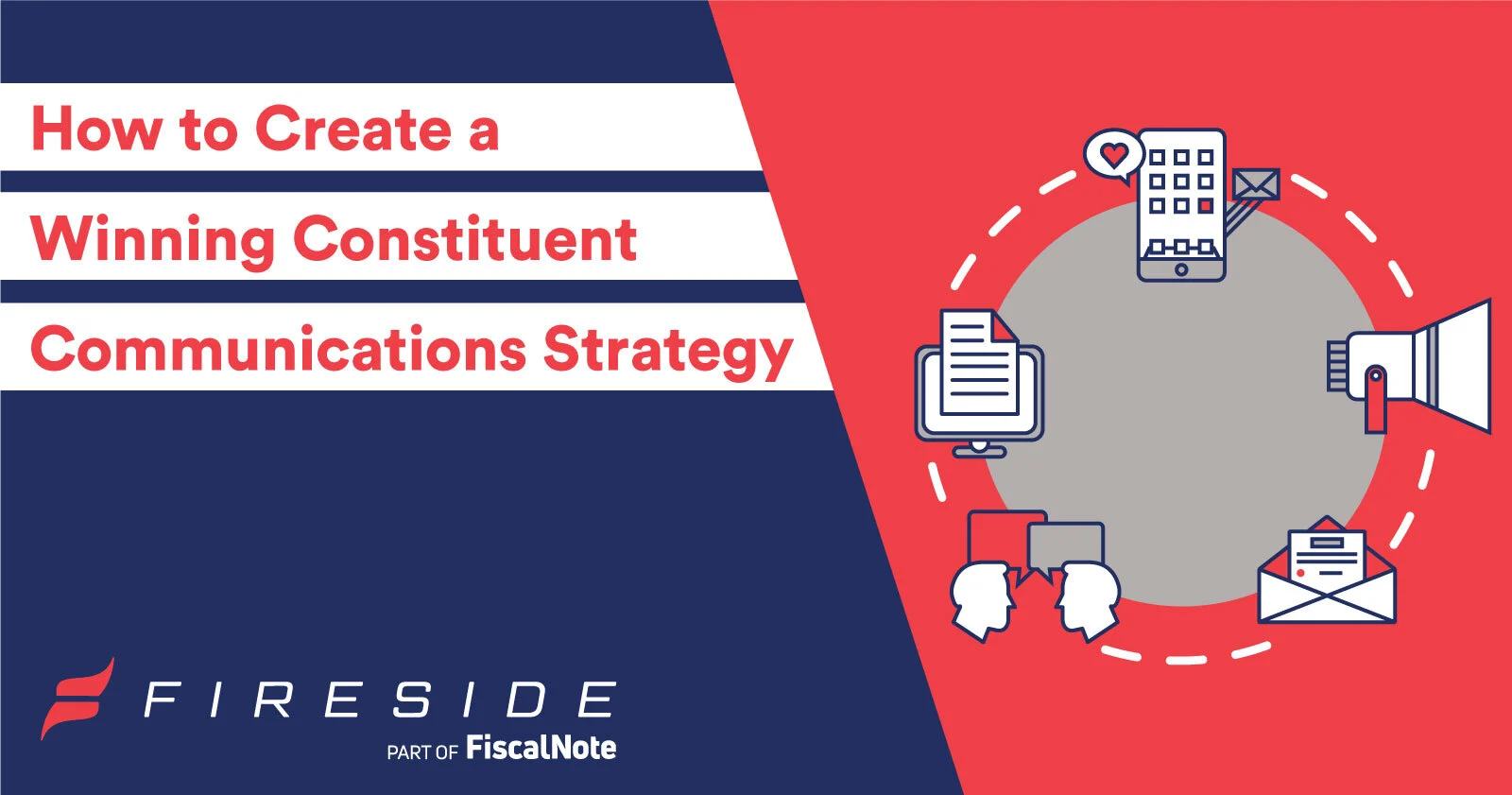Chances are, you could be doing more when it comes to effectively interacting with your constituents. In this age of constant communication and connection, an annual snail mail report or a strategy that’s merely reactive doesn’t cut it with voters.

Having a robust outbound constituent communications strategy can lead to more engaged voters, showcase the good work you’re doing, and pay off during elections. Especially at the state and local level, your work directly impacts your constituents and the issues they care about, so it’s vital to be able to engage them.
Be Proactive
Aim to create a communications strategy that is proactive rather than reactive. Instead of waiting to receive a high volume of emails on a vote before crafting a response, send a message to constituents about the upcoming bill and ask for their concerns and thoughts, advises Scott Crosby, account director for state and local government at FiscalNote.
Another example of proactive communication is reaching out during tax season to let constituents know about available payments and tax filing assistance for them. Based on upcoming legislation and topics on everyone’s minds, be the first one to reach out to your electorate — even ones who have never contacted your office.
Segment Your List
Rather than sending mass updates on your work, upcoming bills, or requests for action to your entire constituent list, segment your outreach list and get in touch with those that might be interested in a particular topic. This ensures your message will go to the most suitable audience who are likely to take action. For example, you can send an email or text message specifically to veterans, teachers, or senior citizens about a bill they might be interested in and ask for their questions and input.
Segmenting your contact list ensures constituents feel seen and heard, and that your messages are not immediately deleted since they are as relevant and tailored as possible.
Create a Regular Newsletter
A weekly newsletter that interested constituents can opt-in to receive is ideal, but if you’re just getting started with an outbound communications strategy, consider starting with a monthly newsletter. This can include an end-of-session report, an update on what’s going on in your district, or a poll of constituents’ legislative priorities. A newsletter is also an opportunity to follow up on important key votes — for example, share that legislation you supported has passed and how it may impact citizens.
While a regular newsletter can seem like a hassle, once you create a template that you can use for each one, you can easily insert the content and reach your constituents regularly with the click of a button.
Use SMS Outreach
SMS, or text messaging, is a surefire way to get a lot of eyeballs on your message. While open rates for an email may be in the 20 percent range, text message open rates jump to the mid 90 percent range, Crosby says. If you have a particularly important or timely message for constituents, whether it’s promoting an event or natural disaster preparedness, sending it via text is an effective way to get high engagement and action rates.
You can also include a short video or photo in your message to add a more personal and engaging touch. Just like with emails, segment your text messages to get the highest action rates and avoid inundating constituents.

Have a Monthly Communications Plan
At the start of each quarter or month, create a detailed roadmap for your constituent communications strategy. You should know well in advance when emails and texts will be sent out, whether in-person events or virtual town halls will be taking place, and which constituent segments need attention. This ensures you have plenty of time to create the content necessary and stay organized in every communication.
A good plan starts with gathering district data, building audiences, and choosing your mediums of outreach. Newsletters, telephone town halls, and web surveys are all excellent ways to connect to your constituents and gauge their opinions throughout the year. Frequency of contact, diversity of medium, and consistency are all keys to an effective strategy.
Use the Right Technology
You can be proactive in constituent communications without a lot of additional staff resources. The right technology means you can access drag-and-drop templates to create newsletters, generate a list in seconds, and easily produce reports on how your multichannel constituent engagement performs.
Having a great Constituent Relationship Management (CRM) tool in place for constituent communications is critical, says Benjamin Aiken, director of constituent services at Arlington County Manager’s Office in Virginia.
“CRM helps create consistent experiences for both the public and staff,” Aiken says. “Systems will improve the velocity and quality of information and place inquiries with the responsible staff in as few steps as necessary according to internal controls. Operational performance is increased by removing unnecessary redundancy and avoiding complicated escalations to executive teams whenever possible. The overall benefit to such a system is to increase customer satisfaction by handling requests expediently.”
Fireside is a budget-conscious solution with an easy-to-use interface that eliminates the need to switch between multiple tools for constituent management, communications, and outreach.
Find out how Fireside State can help you effectively manage constituent communication and outreach.
